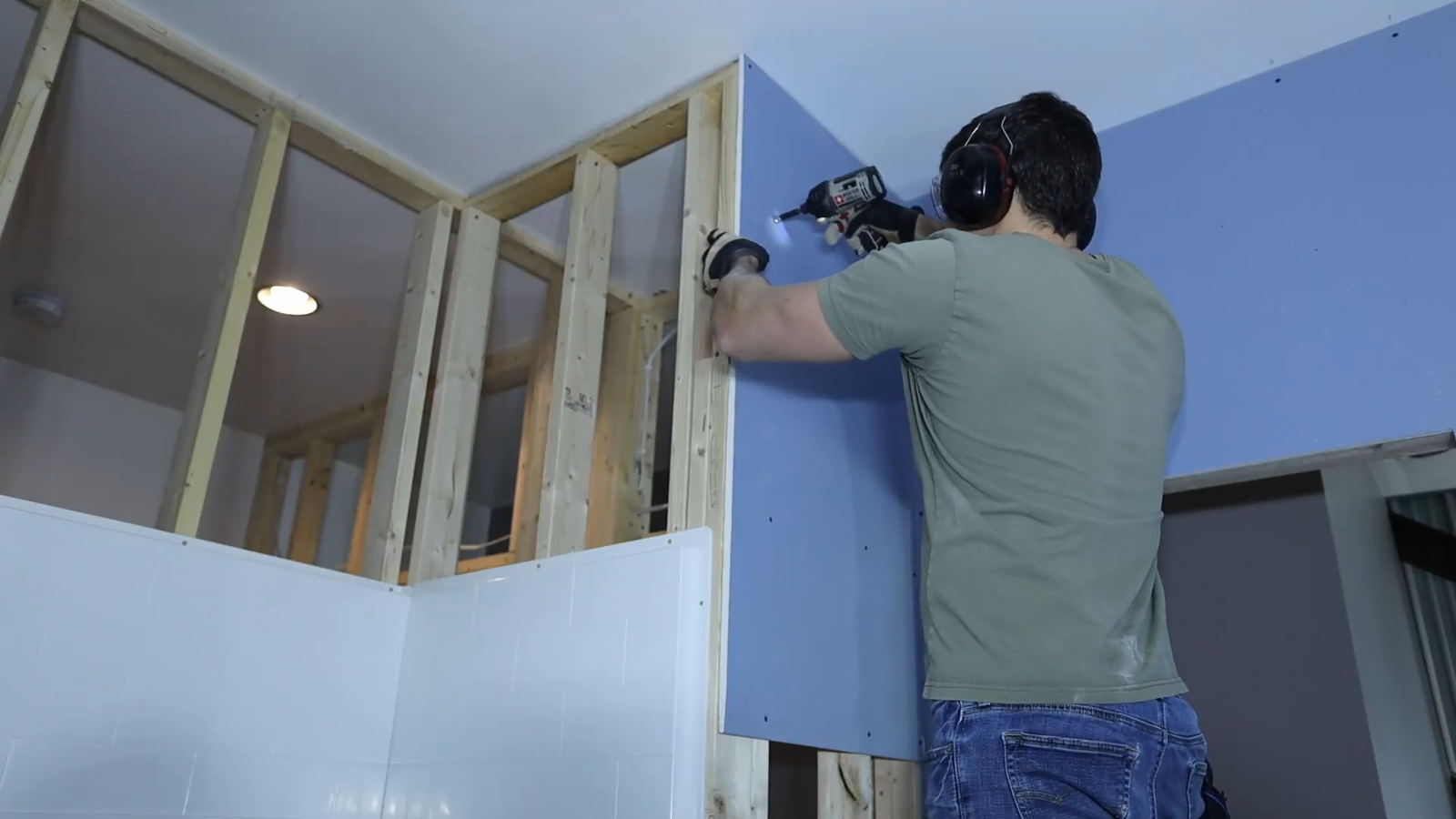Bathrooms are one of the trickiest places in your home to finish properly. The constant humidity, water splashes, and fluctuating temperatures make them a unique challenge when choosing the right drywall.
Pick the wrong type, and you’ll be dealing with mold, crumbling walls, and expensive repairs faster than you can say “leaky faucet.” Pick the right one, and you’ll have walls that last for years, standing strong against steam, water, and daily wear.
1. Why Bathroom Drywall Matters More Than You Think
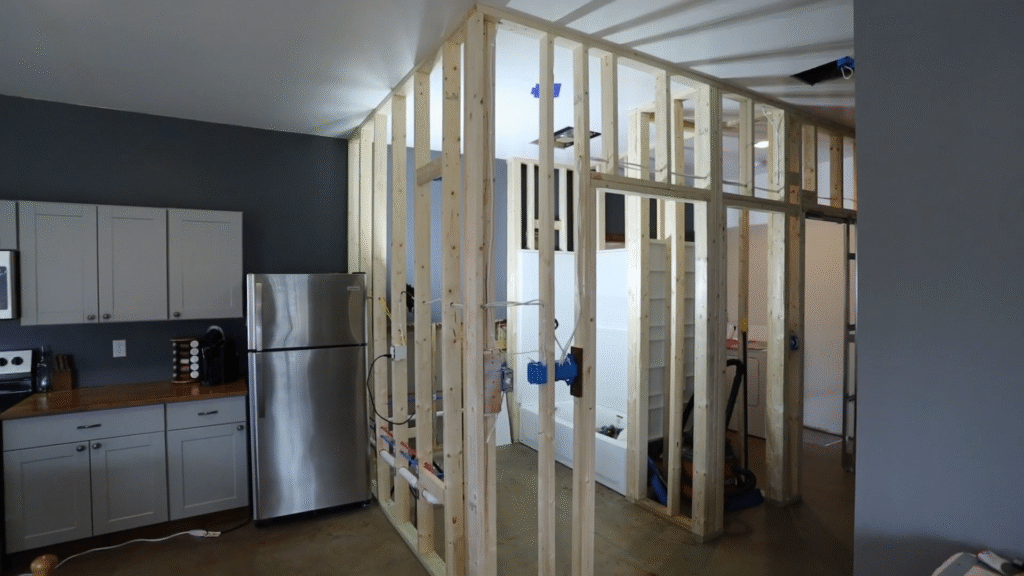
Most people assume all drywall is the same. But bathrooms aren’t your average room. Regular drywall, the type you’d use in a bedroom or living room, is like wearing a cotton T-shirt in the rain—it soaks up moisture and starts breaking down.
Bathrooms are constantly exposed to:
- High humidity from showers and baths
- Direct water exposure near sinks, tubs, and toilets
- Temperature changes (hot showers followed by cool air)
- Mold and mildew growth if moisture gets trapped
According to the Environmental Protection Agency (EPA), mold can start growing in as little as 24–48 hours on damp drywall. That’s why choosing the correct type of drywall is absolutely critical.
I once made the mistake of letting a contractor install regular drywall in a small guest bathroom. Within a year, I noticed bubbling paint, soft spots, and that dreaded musty smell. Let’s just say ripping out soggy drywall isn’t my idea of weekend fun. Lesson learned: never cut corners in the bathroom.
2. The Different Types of Drywall Available
Before we dive into bathroom-specific options, let’s lay the foundation. Drywall comes in several types, each with different uses:
- Regular Drywall (White Board) – Cheap and common, but not water-resistant.
- Green Board – Coated with a moisture-resistant paper, often used in damp areas.
- Blue Board – Used for veneer plaster finishes, not designed for wet areas.
- Purple Board – Moisture- and mold-resistant, stronger than green board.
- Cement Board – Made from cement and fiberglass, 100% water-resistant.
- Paperless Drywall – Covered with fiberglass instead of paper, mold-resistant.
- Fire-Resistant Drywall (Type X) – Designed for fire safety, not moisture.
For bathrooms, the real competition comes down to green board, purple board, cement board, and paperless drywall. Each has strengths, and which one you pick depends on where in the bathroom it will be installed.
3. Green Board Drywall – A Classic but Limited Option
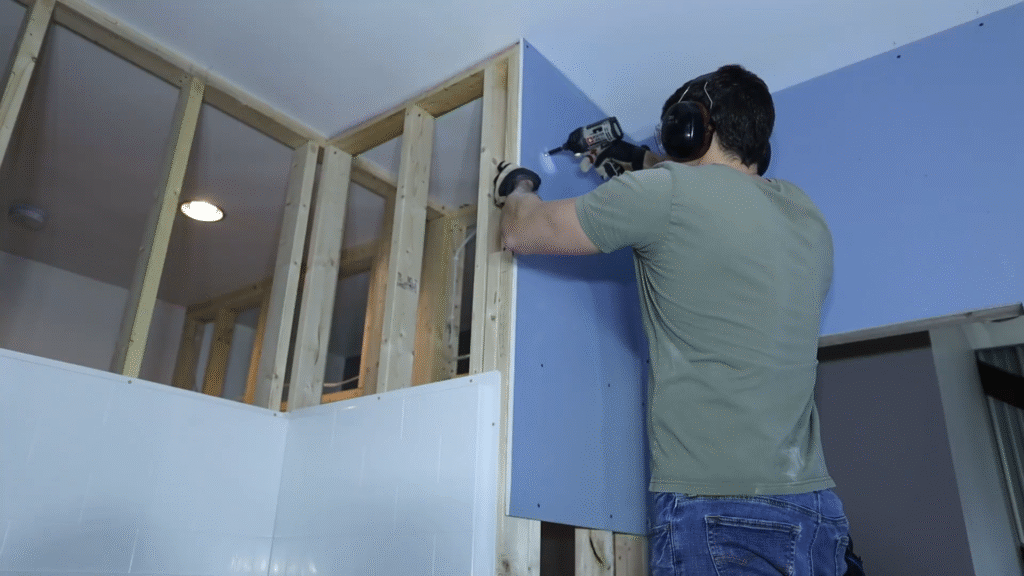
Green board drywall (named for its green coating) has been the go-to choice for many years. It’s slightly more moisture-resistant than regular drywall and is often used in bathrooms, basements, and laundry rooms.
Pros:
- Easy to find and relatively affordable
- Works well for low-moisture bathroom areas (like ceilings or walls away from showers)
- Installs like regular drywall
Cons:
- Not waterproof—just moisture-resistant
- Can still develop mold if exposed to heavy moisture
- Not recommended for shower walls or tub surrounds
Think of green board like a rain jacket—it keeps you dry in a light drizzle, but if you’re caught in a downpour, you’ll still get soaked. For bathroom walls away from water sources, it’s a safe bet. For shower areas? Absolutely not.
4. Purple Board Drywall – The Stronger Upgrade
If you want something tougher than green board, purple board drywall is the next step up. It’s designed to resist both moisture and mold, making it a favorite for bathrooms and other humid spaces.
Pros:
- Superior mold resistance compared to green board
- Good for bathroom walls and ceilings
- More durable and long-lasting
- Available in fire-resistant versions too
Cons:
- Costs more than green board
- Still not suitable for direct water exposure
I installed purple board in my master bathroom a few years ago, and the difference was noticeable. No bubbling, no peeling paint, and the walls feel solid even with daily steam from hot showers. If budget allows, purple board is often the smarter choice for general bathroom walls.
5. Cement Board – The Gold Standard for Showers
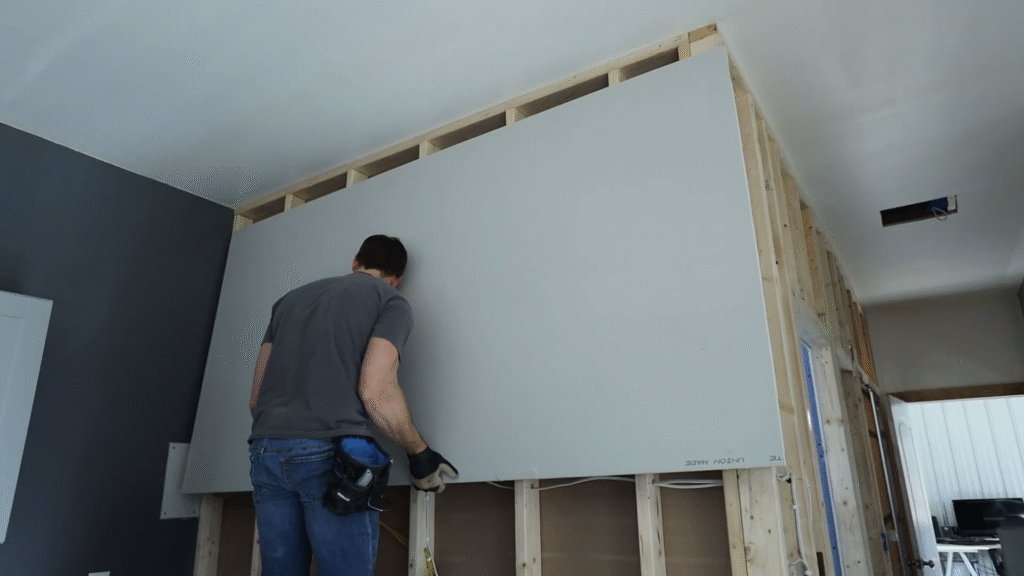
When it comes to showers, tub surrounds, and any area with direct water contact, cement board is hands down the winner. Unlike drywall, it’s made from cement and reinforced with fiberglass, meaning it won’t soften, warp, or feed mold growth.
Pros:
- 100% water-resistant
- Extremely durable
- The only drywall substitute approved for tile backing in wet areas
- Mold- and mildew-proof
Cons:
- Heavy and harder to cut than drywall
- More expensive
- Requires special fasteners for installation
Imagine cement board as the armor of your bathroom—it can take constant hits from water without flinching. Yes, it’s tougher to install, but if you’re tiling a shower or bath, this is the only way to go. Skipping cement board is like building a boat out of cardboard.
6. Paperless Drywall – A Mold-Resistant Hero
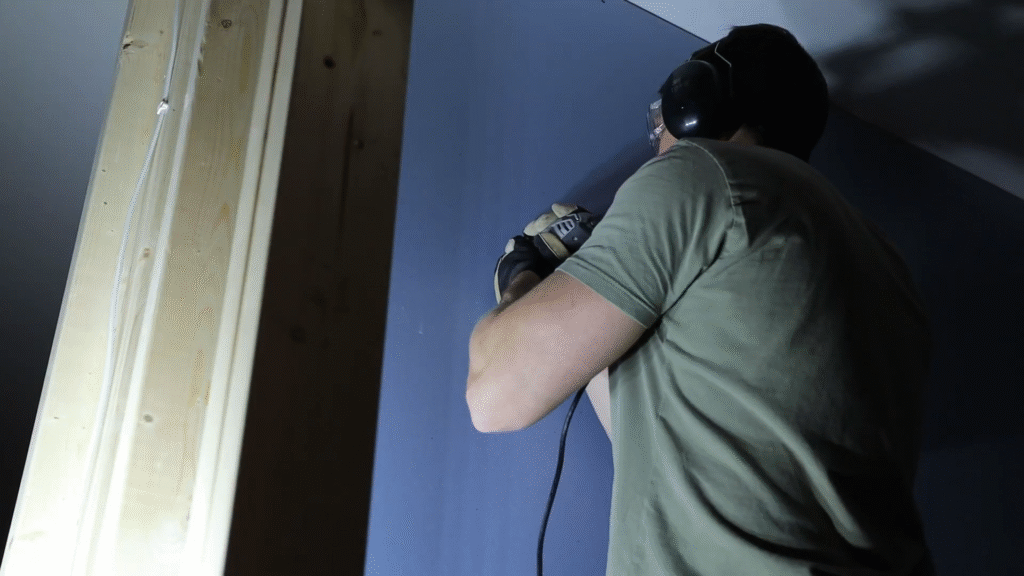
Another strong option is paperless drywall. Instead of the traditional paper covering, it uses fiberglass mats. Since mold loves paper, this design takes away one of its favorite food sources.
Pros:
- Mold-resistant
- Lighter than cement board but still durable
- Works well in humid environments
- Can be used in combination with cement board in bathrooms
Cons:
- Rougher surface, which makes finishing harder
- Slightly pricier than regular drywall
I like paperless drywall for bathroom ceilings and walls that don’t get direct water spray. It’s a great middle ground if you want something more durable than green board but don’t need the full armor of cement board.
7. Where to Use Each Type in a Bathroom
The key to bathroom drywall is knowing where each type belongs. Here’s a simple breakdown:
- Shower walls & tub surrounds → Cement board only
- Walls near sinks & toilets → Purple board or paperless drywall
- Ceilings → Purple board or green board (if well-ventilated)
- Low-moisture areas → Green board works fine
Think of it like dressing for the weather:
- A raincoat (green board) is fine if it’s just misty.
- A waterproof suit of armor (cement board) is needed if you’re standing under a waterfall.
Mixing different types within the same bathroom is totally normal and often the smartest way to balance cost, durability, and protection.
8. Cost Comparison of Bathroom Drywall Options
Here’s a quick look at the average cost per sheet (4×8 ft):
- Regular Drywall: $10–$12
- Green Board: $14–$18
- Purple Board: $20–$25
- Paperless Drywall: $18–$24
- Cement Board: $25–$35
While cement board is the most expensive, remember that repairing water damage can cost thousands. According to HomeAdvisor, the average cost of mold remediation is $1,500–$3,500. Spending a few extra dollars upfront saves a lot in the long run.
9. Tips for Installing Bathroom Drywall
Even the best drywall won’t save you if installation is sloppy. Here are some pro tips:
- Use moisture-resistant joint compound and tape in bathrooms.
- Always apply a quality primer and waterproof paint over bathroom drywall.
- Seal seams with silicone near tubs and showers.
- Install a bathroom exhaust fan to control humidity.
- Keep a small gap between drywall and floors to prevent wicking if water spills.
One time, I forgot to gap the drywall above my bathroom floor tiles. A small leak from the toilet seeped into the drywall base, and I had to replace the entire section. Now I always keep at least a ½-inch gap above the floor.
10. Common Mistakes to Avoid
When people DIY their bathroom drywall, I often see the same mistakes:
- Using regular drywall – It will fail quickly in humid conditions.
- Skipping cement board in showers – No drywall, even green or purple, belongs inside a shower.
- Poor ventilation – Without a fan, even the best drywall can grow mold.
- Cheap paint finishes – Flat paint absorbs moisture. Always use semi-gloss or satin in bathrooms.
- Overlooking waterproofing membranes – In high-moisture zones, using products like RedGard on top of cement board adds another layer of protection.
Avoiding these mistakes saves headaches, money, and weekends spent redoing work.
Conclusion
So, which drywall should you use for a bathroom? The answer depends on where in the bathroom you’re working:
- Use cement board for showers and tub surrounds.
- Use purple board or paperless drywall for walls and ceilings.
- Use green board only in low-moisture areas if you’re on a budget.
Bathrooms are brutal environments for walls, but with the right materials, your drywall will stand the test of time. Remember, moisture is sneaky—it always finds the weak spots. Don’t give it a chance. Spend a little extra upfront, and you’ll have a bathroom that’s not just beautiful but built to last.
FAQs
1. Which drywall is best for bathroom walls?
Purple board or paperless drywall is best for general bathroom walls because they resist both moisture and mold.
2. Can I use regular drywall in a bathroom?
Not recommended. Regular drywall absorbs moisture quickly and can develop mold and soft spots within months.
3. Do I need cement board for bathroom ceilings?
No, cement board is only necessary for areas with direct water exposure. For ceilings, purple board or green board works well.
4. What thickness drywall should I use in a bathroom?
Most bathroom walls use ½-inch drywall, but for ceilings or added durability, ⅝-inch can be used.
5. Is green board still used in bathrooms?
Yes, but mostly in low-moisture areas. For modern bathrooms, many contractors prefer purple board or paperless drywall because they offer better mold resistance.

